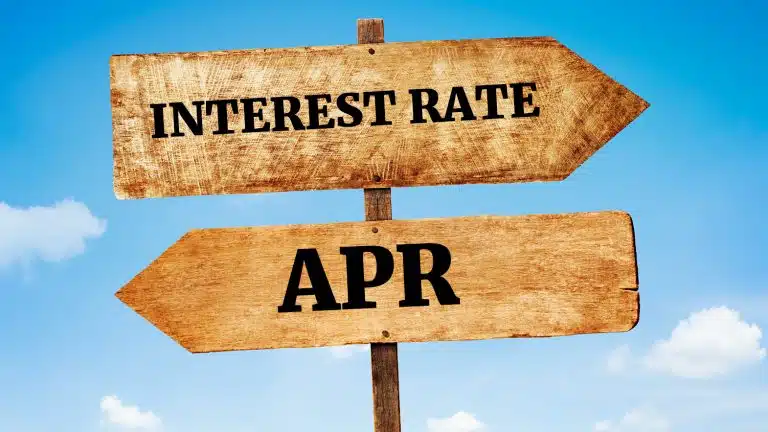It’s surprising that with 364 million open credit card accounts in the U.S., many American consumers don’t understand the big difference between interest rate compared to APR. Considering credit card debt continues to climb, it’s more imperative than ever before to know the actual cost of borrowing money.
Interest Rate vs. APR
Understanding the difference between APR and interest rate starts once you understand what each term means.
What’s an interest rate?
When you take out a loan or credit card, the interest rate is the percentage of your outstanding balance that you pay to borrow the money. It’s a flat percentage that could change created on a creditor’s terms, the type of loan, and repayment behavior.
What is an APR?
In the most basic sense, your APR—or annual percentage rate—is the overall amount that will cost you to borrow cash and measures the real cost of a loan. Beyond the straightforward interest rate attached with your loan or credit card, APR also contains other financing fees which are changed into a complete yearly cost and divided right into a monthly expense. These may include origination fees, points fees, and closing fees among other things.
Because APR bundles the simple annual interest rate and other financing fees, understanding how it works will better help you understand the true cost of borrowing money. It’s also a helpful comparison tool when determining the type of loan or credit card which makes the most sense for your financial circumstances. Janet Berry-Johnson of Credit Karma urges borrowers to think about this key question when you compare new credit card options: What is a good APR to pay?
In its Credit Card Landscape Report, WalletHub reported that average APRs on new credit card accounts in the second quarter of 2018 were at 19.05%. Meanwhile, the typical APR for existing accounts was reduced at 13.08%.
Types of APR Defined
Annual percentage rates will be different with regards to the type of loan and the financial institution or credit card company you’re using.
Home Mortgages and Personal Loans
Home mortgage and personal loan APRs include lender fees, closing costs and more. While these fees are unlikely to improve, the simple interest rates definitely can if the fees aren’t fixed.
According to Investopedia, “A fixed APR loan comes with an interest rate that’s guaranteed not to change throughout the life of the loan or credit facility. A variable APR loan comes with an interest rate that will change anytime. ” A good APR for one person, may possibly not be right for another. It’s important to explore different loans and the APRs connected with them to help you pick the best option for your circumstances.
Common fees added together with the simple interest rate on a home mortgage loan include:
- Origination fee
- Tax service fee
- Underwriting fee
- Document preparation fee
- Wire transfer fee
- Office administration fee
- Broker’s fee
Credit Card APR
In the credit card world, the type of APR you pay depends on the manner in which you use your card. They include:
Introductory APR
This short-term, low or zero percent APR can be used to incentivize individuals to apply for a new card. These promotional rates usually last at the least six months and certainly will extend for as long as 24 months. At the end of the introductory period, the APR will increase. Additionally, it may go up early as a result of missed or late payments.
Balance Transfer APR
If you anticipate using one card to settle another, you’ll likely need to pay a balance transfer fee and a particular APR which will only impact the amount of money transferred.
Purchase APR
As its name suggests, this APR pertains to purchases you make together with your card. When you pay off the full balance each month, you are able to avoid paying interest altogether.
Cash Advance APR
By using your credit card to withdraw cash from an ATM, the total amount will be subject to a separate cash advance APR. This rate is normally higher than a purchase APR. Once you withdraw cash, you will start paying interest on the amount.
Penalty APR
When you fall behind on payments for 60 days or even more, your credit card company will charge a penalty rate that’s higher than any other form of APR. According to Experian, the average penalty APR for credit cards hovers right around 30%.
Certain fees are based on your behavior as a borrower and sometimes aren’t contained in your initial APR for credit cards, such as:
- Annual fee
- Balance transfer fee
- Cash advance fee
- Foreign transaction fee
- Late payment fee
- Over limit fee
- Returned payment fee
These kinds of fees should be outlined in your cardholder agreement so ensure that you read it closely before you sign. Staying proactive about making on-time payments, not overspending, and upping your credit score will all help in keeping your APR low.
What APR Should You Expect you’ll Pay?
It’s crucial that you remember that the higher your credit score is, the low your APR and interest rate on a loan. Before completing an application, take a look at what a good APR for a personal loan is dependent on what you currently be eligible for.
As a borrower, it’s also advisable to understand that you’re protected against inaccurate and unfair credit card and billing techniques under the Truth in Lending Act (TILA). Before a lender or credit card company can charge you any interest or fees, they’re required for legal reasons to disclose all actual and potential charges, fees, and rates linked to the loan.
Whatever type of loan or line of credit you’ll need, make sure you compare your alternatives and the actual costs associated with the borrowed amount. With regards to borrowing money, it pays to do your homework.












